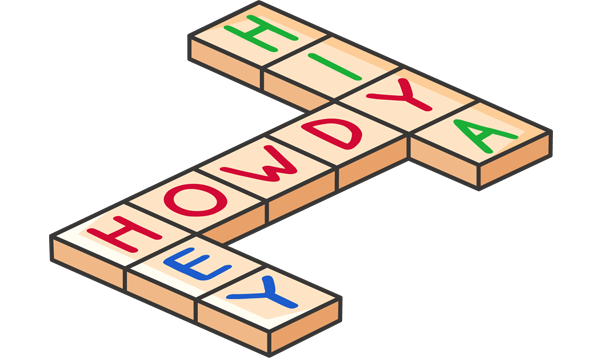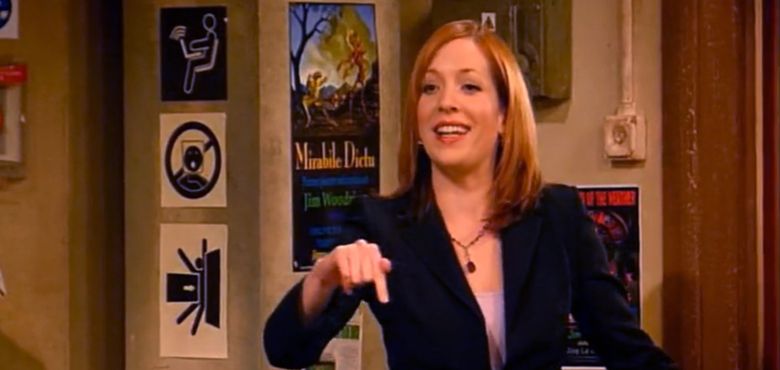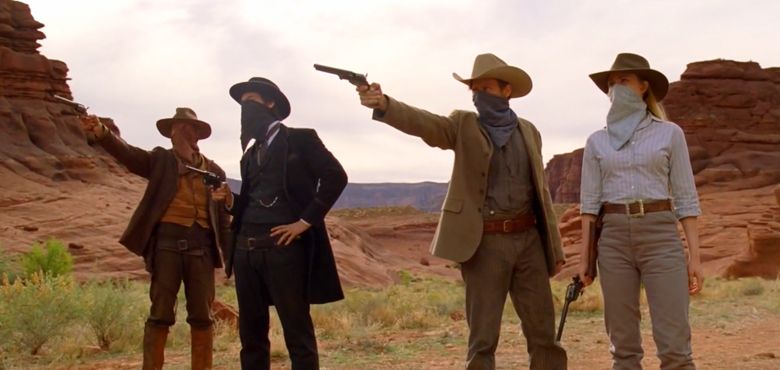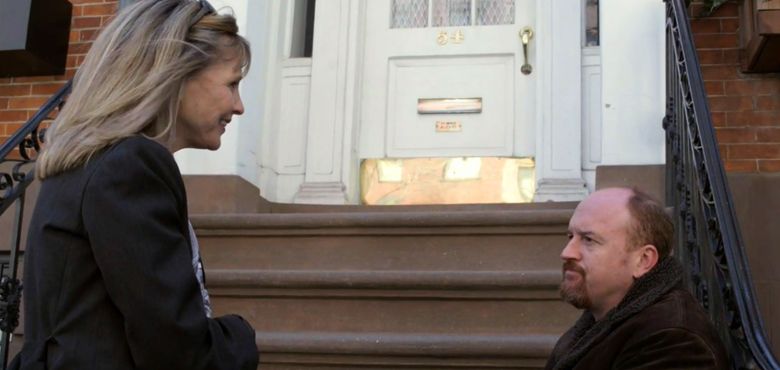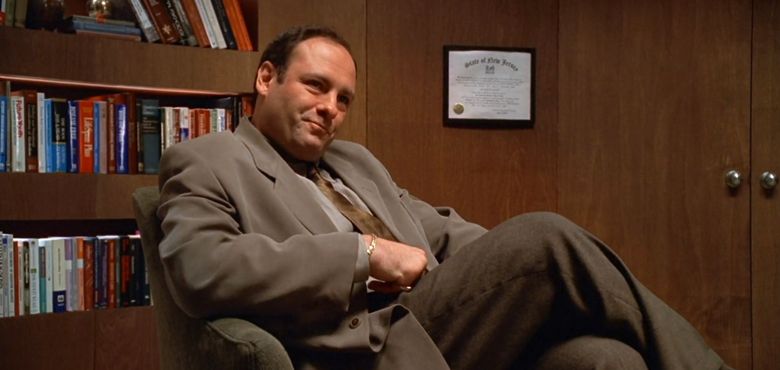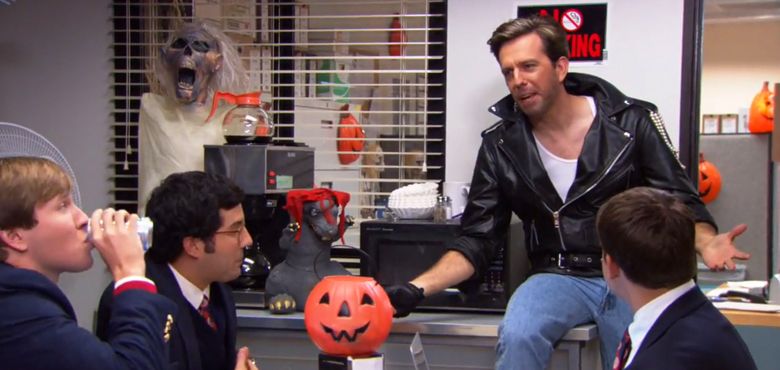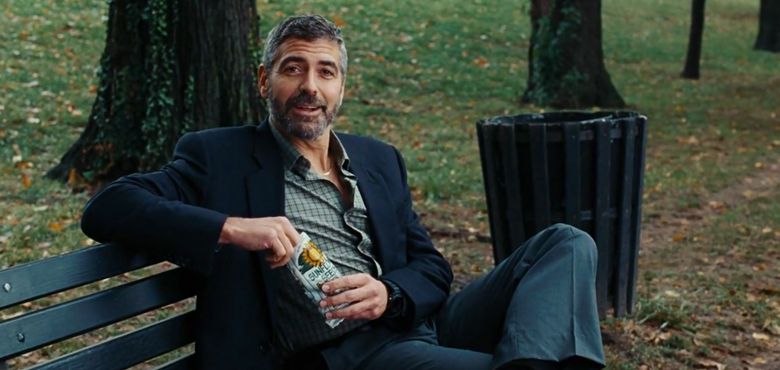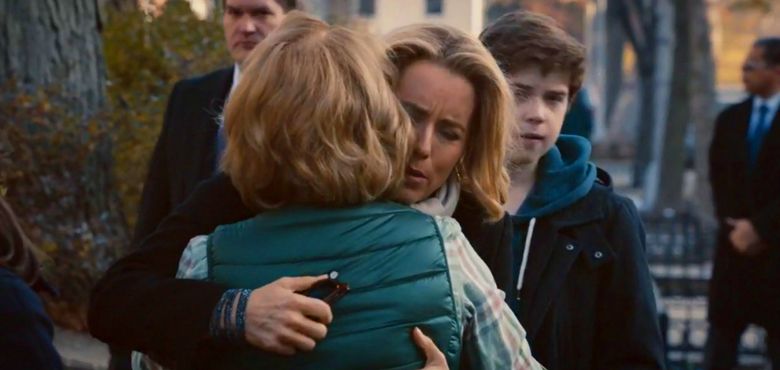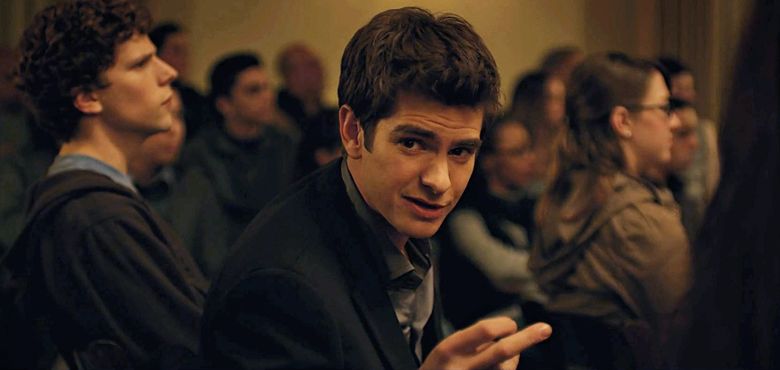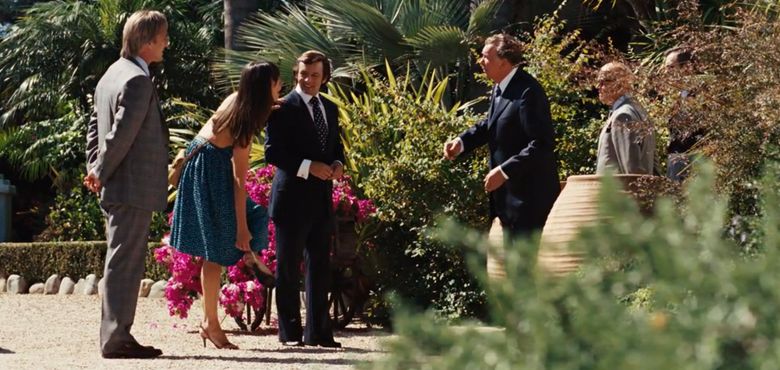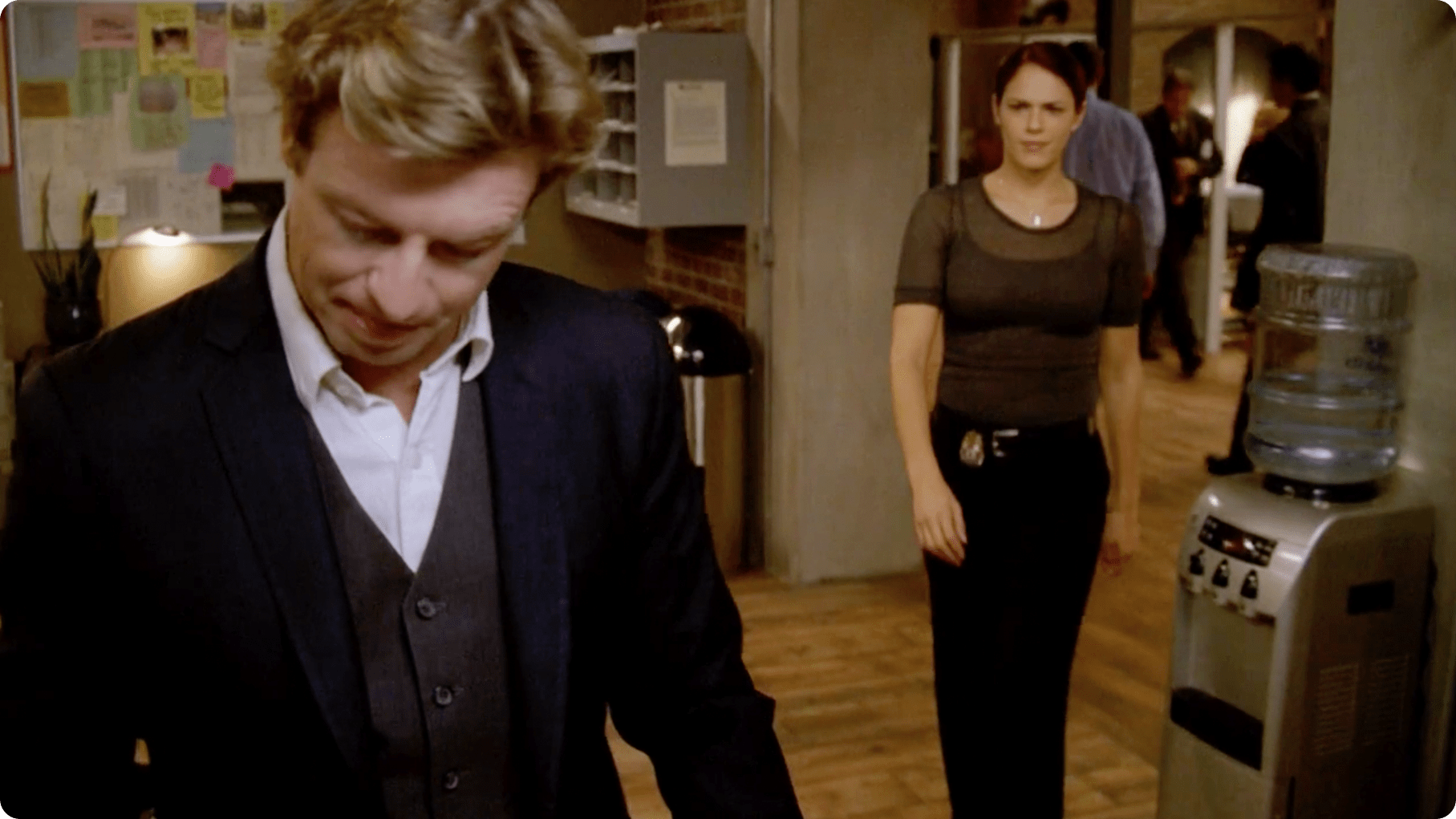There are many other ways of simply saying HELLO.
But for most English students, they learn the word hello and think that is the only word they can use.
This is not true! There are so many other ways to express a simple greeting in English.
And by using all these different words and phrases, your English will sound so much better. People will think you have more fluency and expressing yourself in different ways you will become more confident.
I have outlined below 41 ways to say hello in English. They are divided into three parts:
- Formal
- Informal
- and Very Informal
Are you ready to start learning them today?
Good — let’s get started!
Formal Ways to Say Hello
1. Hello
This is the standard opening word that everyone knows. This is used in formal situations, but it can be used any time you greet someone.
2. Good Morning
This is a very polite greeting. Of course, only use this when you are greeting someone in the morning. You can use it any time from early in the morning to before midday.
In English-speaking countries, colleagues say Good Morning to each other as they arrive at work. You can also use this when you see your neighbours in the morning. Or anyone else, for that matter.
3. Good Afternoon
This is the same as Good Morning, but of course, said in the afternoon.
Any time you meet or greet someone for the first time that day, you can say Good Afternoon. When you go to work in the morning, there is no need to say Good Afternoon to your colleagues after lunch.
Just remember that this is like saying Hello but you only use it between the hours of 12:00pm and 5:00pm and you’re good.
4. Good Evening
And this is the same as Good Morning and Good Afternoon, except you use it in the evening. Any time after 5:00 or 6:00 is fine.
You might say this as you meet people for dinner — or as a greeting to anyone that you meet in the evening.
You will find that service staff will use this expression to greet you as you enter a restaurant or hotel in the evening.
5. It’s Nice to Meet You
You can use this for the very first time you meet someone or you are introduced to someone. It is usually used with Hello.
So you might say — Hello, it’s nice to meet you.
You could also use this when making a presentation to people you don’t know. It could be your opening line — Hello, it’s nice to meet you all. My name is John and today I am going to talk about…
Do you like my articles and lesson plans?
Why not join my mailing list and I can send you new articles and lesson plans when they come out?
Join here – ManWrites Newsletter
6. It’s a Pleasure to Meet You
This is the same as the phrase above, but more polite.
7. Greetings/Greetings and Salutations
These expressions are very old-fashioned. But sometimes people use them as a kind of little joke.
You could meet your friends in a bar for example and when you see them, you might say: Greetings! It might make them smile when you say it.
People very rarely use this expression these days in a serious manner. It is used today in a light-hearted, slightly humorous way.
But years ago, it was a very formal way of saying Hello.
8. Good to See You
Another greeting that can be used in a wide number of situations.
It is a formal expression, but can be used also to greet friends and other associates. It literally means that you are happy to see the person you are talking to. Who doesn’t want to hear that?
You can just say this and replace the word Hello.
Hi John!
Mark! Good to see you!
9. Great to See You
This has the exact same meaning as above but is more polite — great being better than good.
10. What’s the Word?/What’s the Good Word?
This means — How are you? There is no real difference between the first or second version, they both have the same meaning.
I think it is like saying — What good news or information do you have to tell me?
Usually, when people see each other, they like to share news. And people usually like to hear good news, not bad news.
You can precede the expression with Hello, How are you? Or any other greeting.
Hello Jack, what’s the word?
Hello Mike, well, I suppose you heard about me going to Manchester?
11. How Have You Been?
This greeting means How has your life been recently? Or How are you these days?
It is a very polite greeting that can be used in any kind of context.
Hello Jerry.
Hello Stan — how have you been?
12. Good Afternoon, Sir. How Are You Today?
This is a very formal and somewhat old-fashioned greeting expression.
It is no longer seriously used today, but can often be used in a slightly humorous way to greet friends or people we know.
I have a friend who uses this to greet me most times when I speak to him.
13. Good Day to You
Another very formal and old-fashioned expression.
And again, it could be used in a humorous way rather than in with any serious intent.
Informal Ways to Say Hello
14. Hi
This may be one of the most common expressions that people use to greet each other in English these days.
Originally, it is American English but now used all over the world.
15. Hi There
Just a slight variation of the expression above. The word ‘there’ implies the person you are talking to.
16. Morning
A more informal way of saying Good Morning. It can be just as polite as long as you say it with a happy, cheerful tone.
17. G’day
This is Australian English and is short for Good Day.
It is common across most of Australia as an informal greeting.
18. Howdy
And this is a greeting from America. More commonly used in the Southern States.
It is an abbreviation of the phrase How do you do? But now just means Hello.
19. Hey, What’s Up?
This is a very informal greeting from America. It can be translated as — Hello, how are you? What is going on in your life?
There should be a defined rising tone at the end of the phrase.
20. What’s Going On?
Another greeting of American origin. Roughly translated, it means: How are you? Or What is going on in your life?
21. What’s Happening?
Also from America. This means: What is happening in your life?
It’s a very friendly greeting that can be used to greet friends, family, colleagues or acquaintances.
22. What’s New?
A greeting that means: What is new in your life?
Can be used to greet friends, family, colleagues or acquaintances. It is a little more casual than the two expressions immediately above.
23. What Have You Been Up To?
You can say this immediately after saying Hello. It is an invitation for the other person to talk about their life and any news they may have.
You should use this to greet someone who you have not seen for some time.
24. It’s Good To See You
Another expression used when you haven’t seen someone for a long time. This is very polite and friendly.
25. Hey! There She/He Is
This is an expression that you should really only use for someone you know well.
Could be a work colleague or a good friend, but it only works if you have known this person for a long time as it is very familiar.
If said in the right way, it can be quite humorous. You should say it with a strong rising tone at the end.
It means: Here comes a person that we all know.
26. How’s Everything?
A greeting that means: How is everything in your life?
It can be used in a wide variety of contexts and can be used at work or in a social setting with friends.
27. How’s It Going?
A very common greeting. It means: How is your life going? What is the news in your life?
Use it with friends, family and colleagues.
28. How Are You?
Everyone knows this universal expression!
It can be used practically anywhere and in any situation.
29. How Are You Doing Today?
Maybe a little more formal than the others in this list. You can also just say: How are you doing?
30. How Are You Feeling Today?
Maybe less used than others, but still used here and there.
31. How Are Things?/How Are Things With You?
When people say things, they mean your life. It is like saying How are you? How are you doing?
You can use this with friends, colleagues and family.
It is quite a common English phrase to use.
32. Long Time No See
This is of Chinese origin but now used by English speakers all over the world.
It means: It has been a long time since I have seen you, how are you?
Use it in all situations with any person you meet.
33. Look Who It Is!
Only use this with people you know very well.
It is a very personal and familiar phrase, but when people say it, it can be used in a very humorous way.
Roughly translated, it means that you recognise the person approaching you and you know them very well. It also means that you are very happy to see them.
34. Nice To See You/Nice To See You Again
This is a very polite phrase that means you are happy to see the person you are greeting.
You can use this in any situation and with any person in any context as it is so polite.
Very Informal Ways to Say Hello
35. Hey
This is a very common way to greet people. Use this with close friends and people you know very well.
Not to be used when greeting someone at a business meeting or your teacher.
36. Hey There
A variation of the above greeting. The word there refers to the person you are talking to.
37. Sup?
This is a variation of the previous greeting expression What’s up? An abbreviation for a more relaxed way of saying hello.
This is very common with young people.
38. Yo!
This became very popular in the eighties. Maybe not as popular today, but still widely used.
It is very informal so only use it with close friends and people you know very well.
39. Look What The Cat Dragged In!
This is very informal, and it is very familiar. Only use it with close friends and associates!
It is a small kind of joke referring to the person that you are greeting that your cat caught this person and brought it into your house.
Do not use this to greet your boss or teacher!
40. Oh No, Look Who It Is!
Another funny expression. You can say this as if to say you do not wish to see the person you are greeting — but in fact, you are very happy to see them.
This is very familiar and very relaxed, so use it only with your good friends.
41. Oh, Look Out!
Very similar to the above expression. Another jokey greeting.
It means that you are shocked to see the other person, and you are concerned about seeing them. But this is just the humour of it. In fact, it means you are happy to see them.
Conclusion
So there you have it. 41 expressions you can use to greet friends, colleagues, business associates, teachers, fellow students and your family.
You don’t just need to use Hello — you can use a very wide array of expressions, depending on the situation and context.
Practice them today and use in your own life.
“Hello, it’s me,” — поет небезызвестная Адель. В этой статье попробуем ответить ей, а для этого изучим, как можно сказать «привет» по-английски несколькими разными способами.
Hello — самая нейтральная и самая распространенная форма приветствия. Британцы иногда говорят hallo, а также могут написать hullo. Hi используется в неформальных ситуациях, а good morning/afternoon/evening — в более формальных. Сегодня рассмотрим более нетривиальные способы поприветствовать другого человека.
1. Hello/Hi there! — Привет!
Hello/Hi there может использоваться, чтобы выразить удивление, если вы не ожидали увидеть человека или не сразу его заметили, а также показать, что спустя долгое время рады встретиться.
There в конце фразы может означать, что вы обращаетесь к кому-то, кто находится поодаль от вас, и хотите привлечь его внимание. Есть мнение, что слово there добавляет приветствию дружелюбия.
Hello there.
Have you caught it yet?
Not quite, Jen. The spider’s managed to walk behind me. And it’s between me and the door.
Перевод
— Привет.
— Уже поймал?
— Ну, не совсем, Джен. Паук умудрился меня обойти. И сейчас он между мной и дверью.
Есть еще один вариант — You there! (Эй, послушай!) Он довольно неформальный и может восприниматься как грубость.
2. Howdy! — Здорово!
Это неформальное приветствие когда-то было популярно на юге США и в некоторых западных штатах страны. Howdy можно услышать в фильмах о Диком Западе, ковбоях и индейцах. Сейчас это восклицание считается устаревшим, но ради шутки южане могут так поздороваться с жителями других штатов, чтобы подчеркнуть свое происхождение.
Howdy. My associates and I are here to relieve you of your ride.
Someone’s been telling you boys tales. Nothing in this wagon worth taking.
Перевод
— Приветик. Мы с помощниками хотим облегчить ваш путь.
— Кто-то вам наговорил сказок, парни. В этой повозке ничего ценного.
3. Hey! — Привет!
Hey — американская альтернатива hi — используется только в неформальных ситуациях. С этим приветствием рекомендуем быть осторожными, так как оно может показаться грубым, пренебрежительным и даже агрессивным. Связано это с тем, что hey часто употребляют в значении «эй», когда хотят привлечь чье-нибудь внимание, выразить удивление или недовольство.
Hey. I didn’t see you today.
Yeah, I…
Oh. I see. You know, I don’t just have these places. I could show you some nice rentals. Small, but okay.
No, I’m buying this house.
Перевод
— Здравствуйте. Я вас сегодня не видела.
— Да, я…
— Понятно. Знаете, у меня есть не только такие дома. Могу показать вам хорошие съемные квартиры. Небольшие, но приятные.
— Нет, я куплю этот дом.
4. Hiya! — Приветики!
Британский вариант hiya, в отличие от hey, используют только в отношении хорошо знакомого человека. Дети и подростки так приветствуют своих ровесников.
Hiya!
Mary? What are you… ? No, we, we agreed we would never bring Rosie out on a case.
No, exactly. So… don’t wait up.
Перевод
— Приветики!
— Мэри, что ты тут… ? Нет, мы же решили, что не берем Рози на расследование.
— Так и есть. Так что… ложись спать без нас.
5. How are things? — Как дела?
Если речь идет не о близких друзьях или членах семьи, то от вас не ждут детального рассказа о последних событиях и вашем здоровье. Достаточно сказать, что все хорошо, или в ответ повторить How are things?, а можно использовать другую фразу с тем же значением: How’s everything? / How’s it going? / How are you doing? / How have you been?
How are things?
Good. I had a real good week. A friend’s in the hospital. That’s never pleasant, but… Otherwise, I’m having a good week.
Перевод
— Как ваши дела?
— Хорошо. У меня и правда была хорошая неделя. Мой друг в больнице. Неприятно, конечно, но… В остальном все хорошо.
6. What’s up? — Как жизнь?
Если выражение используют в качестве приветствия, как и в предыдущем случае, в ответ не ждут услышать правду о том, как у вас дела. Обратите внимание, что What’s up? неуместно в общении с малознакомыми людьми, в деловой коммуникации, а также по отношению к людям, которые значительно старше вас. Обычно What’s up? (также Whassup?, Wassup? или просто Sup?) звучит в речи молодежи.
Dudes! What’s up? You didn’t come here to sit in a room, right? You came here for some intergenerational bro time! Well, now’s your chance! I’m here!
Перевод
— Чуваки! Как дела? Вы пришли не просто посидеть, верно? Ждете, когда старшие по-дружески поделятся с вами опытом? Что ж, вам повезло! Я здесь!
Выражение также часто употребляют в значении «В чем дело?», «Что происходит?».
7. Long time no see. — Давненько не виделись.
Загадочная фраза, нарушающая правила английской грамматики, возможно, была позаимствована американцами из китайского языка. Выражение long time no see относится к неформальным приветствиям и уместно по отношению к друзьям, родственникам и хорошим знакомым, с которыми вы встретились спустя долгое время.
В таком же значении можно услышать фразы haven’t seen you in/for ages, it’s been ages, it’s been a while, а также шутливое hello, stranger (привет, незнакомец).
Long time no see.
Well… busy today, huh?
Oh. Tuesday specials. Cream-filleds are half off. If we don’t sell them by midnight, they get as hard as hockey pucks.
Перевод
— Давно не виделись.
— Ну… Сегодня много народу, да?
— О, вторник. Блюдо дня. Кремовые десерты за полцены. Если не продадим до полуночи, они станут, как хоккейные шайбы.
8. Look who’s here! — Смотрите, кто здесь!
Эта фраза используется, когда вы не ожидали увидеть человека и показываете свое удивление, а также если вы хотите привлечь внимание окружающих к тому, кто пришел. В обоих случаях вместо look who’s here можно сказать look who it is.
Look who’s here.
Hi, Mom.
Hi, sweetie. How’s my boy?
Перевод
— Смотрите-ка, кто здесь.
— Привет, мам.
— Привет, милый. Как поживает мой мальчик?
9. Well, hello! — О, привет! / Ну, привет!
Эту фразу используют в двух случаях: если вы не ожидали встретить человека и когда вы давно кого-то не видели. Во втором значении она синонимична long time no see и look who it is.
Harry? It’s Linda.
Well, hello.
Перевод
— Гарри? Я Линда.
— Ну, привет.
10. Nice to see you. — Рад видеть!
Этой фразой уместно приветствовать знакомого человека. В конце можно добавить again (снова) — Nice to see you again! В отношении хороших знакомых и друзей используют фразу good to see you, однако первое выражение считается более вежливым.
Обратите внимание, что фраза I’m glad to see you, а также более эмоциональный вариант am I glad to see you используют, когда вы рады, что кто-то наконец пришел.
Hey, Aunt Maureen.
Good to see you, Elizabeth.
Maureen, nice to see you. I’m so sorry about Patrick.
Перевод
— Здравствуй, тетя Морин.
— Рада тебя видеть, Элизабет.
— Взаимно, Морин. Я сожалею о Патрике.
11. Nice to meet you! — Приятно познакомиться!
Nice to meet you, в отличие от nice to see you, используется только в отношении незнакомых вам людей наряду с фразами I’m pleased/delighted to meet you и It’s a pleasure to meet you.
I’m Christy Ling. This is Alice.
Well, very nice to meet you.
Facebook me when you get home. You know, maybe we can all go out and grab a drink.
Перевод
— Я Кристи Линь. А это Элис.
— Привет, очень приятно познакомиться.
— Как придешь домой, напиши мне на Facebook. Знаешь, мы все могли бы сходить куда-нибудь выпить.
12. How do you do? — Здравствуйте.
Очень формальное приветствие, которое многие считают устаревшим. Раньше How do you do? использовали при знакомстве с человеком, после того как он представился или его представили. Отвечали обычно этой же фразой. Сейчас так не здороваются, разве что в высших кругах британского общества.
How do you do? This is Mr Lazar, and this is Jack Brennan. Now, Miss Cushing, would you like to take a tour, you know, maybe stretch your legs after your long journey?
Перевод
— Здравствуйте. Это мистер Лазар, а это Джек Бреннан. Мисс Кушинг, я могу вам устроить маленькую экскурсию, чтобы размять ноги после долгой поездки, хотите?
13. What’s the good word? — Что хорошего? / Что нового?
Так можно поприветствовать друзей, коллег или хороших знакомых. Но не удивляйтесь, если в ответ вы услышите какое-нибудь странное слово, например: ventriloquist (чревовещатель), nectarine (нектарин), plethora (множество) и вообще все что угодно. Такой шутливый ответ на приветствие принят среди американцев.
What’s the good word, Reginald?
The kegs are tapped out. We’ve got more empty bottles than full. Hell, even your mocktails are selling out tonight.
Перевод
— Что хорошего, Реджинальд?
— Бочки уже осушили. У нас больше пустых бутылок, чем полных. Даже твои безалкогольные коктейли сегодня хорошо продаются.
14. Morning! — Доброе утро!
Если good morning/afternoon/evening звучат формально и часто используются, когда нужно поприветствовать аудиторию, то morning/afternoon/evening уместно говорить в непринужденной обстановке. Обратите внимание, что good night и night говорят только на прощание.
Morning!
What are you doing?
Just a little favor for Cho.
Перевод
— Доброе утро!
— Что ты делаешь?
— Кое-что для Чо.
15. (Are you) all right? — Как ты? / Все нормально?
Эту фразу обычно говорят, когда с человеком что-то случилось или он неважно себя чувствует. Однако в Великобритании это выражение также используют в качестве приветствия, по значению и функции оно схоже с What’s up? и How are things?
Hello! You all right?
Yeah, good, thanks.
Перевод
— Приветствую! Как дела?
— Все хорошо, спасибо.
16. Good day! — Добрый день!
Еще одна фраза, которую сейчас можно найти только в старых фильмах и книгах, услышать от пожилых людей или… австралийцев. Если good day кажется британцам и американцам старомодным и слишком вежливым, то в Австралии неформальное приветствие g’day (привет) звучит утром и днем повсеместно. Если вы фанат этой страны, советуем запомнить.
Oh, Australia’s waking up. G’day, guys!
Перевод
— О, Австралия просыпается. Привет, ребята!
Чтобы не оказаться в неловком положении, постарайтесь запомнить, в каких ситуациях уместны те или иные формальные и неформальные выражения. А что сказать на прощание, читайте в статье «23 способа попрощаться по-английски».
В завершение предлагаем выполнить тест и проверить себя.
Тест по теме «16 приветствий в английском языке»
© 2023 englex.ru, копирование материалов возможно только при указании прямой активной ссылки на первоисточник.
Here Are Ten Other Ways To Say “Hello”
powered by
LanguageTool
Improving your English fluency starts with learning how to say the most common phrases in multiple ways. Let’s start with “hello.”
Alternatives to “Hello”
- Hello is a common greeting used at the start of conversations. A few formal phrases you can use in place of hello are:
- ○ How are you?
- ○ Pleased to meet you.
- ○ It’s good to see you.
Hello There!
Knowing how to speak fluent English entails much more than just memorizing definitions, understanding the parts of speech, and following the grammar rules.
Learning several different ways of saying even the most common phrases helps you sound more natural, regardless of the scenario.
Below, you’ll find ten formal and informal ways to say the most popular English greeting out there—hello.
Picture this: Your colleague takes you to an important meeting. You go around shaking everyone’s hands and repeatedly say “Hello…hello…hello” as your colleague introduces you to numerous people.
Sure, there’s nothing wrong with repeating the same greeting over and over again. But most of the time, a fluent speaker would instinctively switch up the word choice, even if only once or twice.
You could use the phrases below to substitute or supplement the word hello.
1. Good morning/afternoon/evening.
These are classic, formal phrases to use when greeting someone, whether it’s the first time meeting them or if you’ve already met them before.
Hello, Frank.
↓
Good morning, Frank.
Using good morning, good afternoon, or good evening depends on the time of day.
2. Pleased to meet you.
This phrase is a formal alternative to hello and only works when you’re meeting someone for the first time.
Hello, I’m Sarah.
↓
Pleased to meet you. I’m Sarah.
3. It’s nice to meet you.
As with the previous phrase, this hello alternative only works when you first meet someone.
Hello, Christopher.
↓
It’s nice to meet you, Christopher.
Conversely, if you’re saying goodbye to someone you’ve just met for the first time, you would say it was nice to meet you.
4. It’s good to see you.
This alternative is suitable when you’re greeting someone you’ve already met. As we mentioned earlier, this phrase can be used to replace hello entirely or simply supplement it.
Hello, Connor.
↓
It’s good to see you, Connor.
or
Hello. It’s good to see you, Connor.
5. How are you?
This alternative is extremely common. It’s unique in that people use it as a common greeting, but don’t expect a thorough, even honest answer when they ask it. In other words, people expect a one or two-word answer like I’m fine, or I’m well, …even if you aren’t.
Hello, Ana.
↓
How are you, Ana?
or
Hello. How are you, Ana?
Casual Ways To Say “Hello”
Now, let’s say that the same colleague who just took you to an important meeting invites you out after work to meet her friends. In this much more casual and relaxed atmosphere, you don’t have to stick to the formal greetings like pleased to meet you. Instead, you can say:
6. Hey.
Hey is a direct synonym of hello, except much more casual.
Hello, I’m Ike.
↓
Hey, I’m Ike.
You can use the following phrases on their own, or add hey beforehand.
7. What’s up?
What’s up is the casual equivalent to how are you, in the sense that people usually aren’t expecting a long response when used as a greeting.
Hello Brad, I’m Jerry.
↓
What’s up, Brad? I’m Jerry.
8. What’s new?
Whereas what’s up works whether you’re meeting someone for the first time or already know them, what’s new works best with people you already know.
Hello, Jonas.
↓
What’s new, Jonas?
9. Long time no see.
Long time no see is a casual way of saying “it’s been a long time since I last saw you,” and therefore only works for people you already know.
Hello, Monica.
↓
Hey, Monica. Long time no see.
10. How’s everything?
How’s everything is another phrase you could use in place of hello. It’s asked casually to know what people have been up to or if anything interesting has happened. It’s basically another way to say how are you?
Hello everyone. How are you?
↓
Hey everyone. How’s everything?
Say Hello to Flawless Writing
Besides correcting spelling and grammar errors, LanguageTool can also help improve your written fluency by rephrasing your writing. You will be pleased to meet the new sentences LanguageTool can rewrite for you.
Unleash the Professional Writer in You With LanguageTool
Go well beyond grammar and spell checking. Impress with clear, precise, and stylistically flawless writing instead.
Get started for free
We Value Your Feedback
We’ve made a mistake, forgotten about an important detail, or haven’t managed to get the point across? Let’s help each other to perfect our writing.
Hello readers!
We are sure that everyone who read this understood the previous greeting.
But, do you know how to greet people in some other way besides ‘Hello,’ ‘Hi’ or Good morning etc.?’
There are many ways to say hello in English, formal or informal. They are slightly different, but useful for many reasons. One advantage is the possibility to use different words or phrases depending on the situation.
Let’s learn all the ways to say hello in English.
Whether you are a student that started learning the language, or a fluent speaker, we got you covered.
If you want to practice and improve greetings in English, the right exercise is with
English tutors on Justlearn.
What does ‘greeting’ mean?
According to the
Cambridge Dictionary, a greeting is defined as ‘something
friendly or
polite that you say or do when you
meet or
welcome someone.’
Every language has its forms of salutations, so English is no exception. Just like
English idioms and phrases, this is also a necessary part of every conversation. To greet someone shows that you are polite. Depending on the occasion, it means you want to start a conversation with that person or a group of people.
For a start, take a glance at the video explanation about saying hello in different ways:
The importance of using greetings
As we mentioned, it’s polite to greet someone.
People you greet will consider you a nice person, and someone they can talk to.
Wherever you go, the first thing you do is greet someone. Almost every person on the planet knows to say hello in several more languages besides their mother tongue and English.
Saying ‘hello’ in different languages is always fun to learn. If you still haven’t learned it, then what are you waiting for?
Informal Greetings
Informal greetings are used among friends, family members, or with someone of your age.
While some of the greetings clearly show the form to salute someone, others, however, don’t seem like that in the first place.
Hello
This form of salutation is the most common and the most familiar one worldwide. It is used in movies, songs, used when English people are answering the phone.
It’s an informal way to greet someone, although it can be used when you see someone your age in the street.
Even though both are informal, ‘Hi’ is a bit more informal than this one.
Hi/ Hey, Hey man
‘Hi’ is the most common greeting in English.
There is a slight difference, though, between saying ‘Hi’ and ‘Hey.’
People mainly use ‘Hi’ in many different casual situations, while ‘Hey’ is mostly used with the people you already know.
If you want to be specific and greet a male friend, then you can say ‘Hey man.’
How are things?/ How’s everything?
Instead of using ‘How are you?’, there are several similar options. They are used mainly to greet someone you already know, but they can also be used to greet someone informally.
If your speaker is willing to continue the conversation, they will probably go in details when you ask them how everything is. If they perhaps don’t want to talk, they will give you a simple answer like ‘good,’ or ‘not bad.’
How’s your day (going)?
Using these phrases is one of the ways to ask, ‘how are you?’
By asking ‘How’s your day’ or ‘How’s your day going?’ you greet that person, and at the same time, ask them how their day is going.
It’s also good for starting a conversation between people. If the speaker is willing to chat, they may ask you, ‘what about you?’ to continue the conversation.
It’s been a while/ Long time no see
It’s one more informal way to greet someone close to you, especially if you haven’t seen them for a while. For example, in case you haven’t seen each other for a few months. If you accidentally come across someone like that, then this greeting is perfect for that situation.
Look who it is!/ Hey! There she/he is!
When you haven’t seen someone for a while and you run into them accidentally, then you can use this form of greeting. By saying it, you seem delighted to run into that person, which you can show with this salutation.
Morning!/ Afternoon!/ Evening!
This form is a shorter and more casual form of ‘Good Morning/ Afternoon/ Evening.’
Don’t take this the wrong way; you can use ‘Good morning/ Afternoon/ Evening’ on any occasion you want to, but this form of greeting is mainly used informally among close friends and family members.
Nice to see you/ Good (Great) to see you
This greeting can be used in situations when you haven’t seen some of your close friends or family members. This one is usually followed by a hug, though, it isn’t necessary.
What’s up?/ What’s new?
What’s up, or What’s new?, and even ‘What’s going on?’ are two-in-one forms of greeting someone.
Not only do you greet him, but you ask them how they are, which is excellent for starting a conversation. If the answers are ‘not much’ or ‘nothing,’ then they probably are not in the mood to talk. If, however, they start talking about what’s new, then bingo! They want to talk, so you two can continue chatting.
Slang Greetings
Slang greetings are more casual, even more than the informal ones. They are used by a specific group of people, social circles, or teenagers, for example.
It’s vital to use them only with close friends and people who know you well. Wherever you go, you will have to learn new slang greetings since they differ pretty much even in the same country.
Here, we’ve listed some funny ways to say hello by using slang.
Alright mate?/ You alright?
This slang greeting is common in Britain. There is no difference between ‘Alright mate? Are you alright?’ or ‘ Are you OK?’ so you can use all three of them in the same situations.
Hiya
Here is one more abbreviation for ‘how are you?’
What makes this greeting amusing is that you can answer with only ‘hey.’
Not all English speaking countries use this phrase. It’s common only in some parts of England, so if you travel to Australia or Canada, don’t use this one.
Howdy
This form of salutation is often used in southern parts of the USA and some parts of Canada.
It’s an abbreviation for ‘how do you do?’
Don’t be offended if people start laughing at you if you use it, for example, in England. They rarely use this salutation.
G’Day, Mate!
This greeting does come from one of the countries where English is spoken. And that country is Australia.
Australian slang words differ from the ones spoken in the USA, Canada, or Great Britain.
As we said, don’t use the ‘Hiya!’ phrase if you are in Australia. Now, on the contrary, or the
Land Down Under common slang greeting is ‘G’Day Mate!’ so feel free to use it there.
It is a shorter form of ‘Good day!’
What’s shaking?/ What’s shakin’?
It’s a very casual way to say ‘How are you?’
Use it only with your close friends because if you use it with older people, for example, they won’t quite understand you.
Whazzup?
This greeting is a short form of ‘What’s up?’
Teenagers and young adults use it often. Another abbreviation may be ‘Sup?’
Yo
This one is a very informal form, used mostly in America.
It became popular during the 1970s in hippy circles. Today, it’s used in very close circles.
We don’t recommend using it to greet older people or at work.
Formal Greetings
Formal greetings are an ideal way to show your interest and politeness. They can be used at work, in business meetings, while traveling, or with older people and strangers.
When you first meet someone, you usually have to use a formal greeting. Over time, formally it can be replaced with an informal way of greeting, and speaking as well.
Good morning/ Good afternoon/ Good evening
This is a formal way of saying ‘Hello.’ Depending on the time of the day, ‘Good morning’ is used in the morning, and ‘Good afternoon’ right after noon. ‘Good evening’ is used after around 6 pm.
Don’t mix ‘Good night’ with these greetings. Have in mind that this expression is used to say goodbye.
How do you do?
This greeting was very common 50 years ago. You can still hear older people use it. It’s very polite and perhaps too formal, too.
The appropriate reply is usually ‘I’m alright,’ although you can use ‘How do you do?’ as a response back.
How have you been?
This form of salutation is ideal in situations when you’ve already met someone. When you see them again, you may use ‘How have you been?’
As an answer, you can say ‘I’m well,’ which means that you are answering from the time you’ve met until that day.
Pleased to meet you
In cases when you meet someone for the first time, the formal and polite way to greet them is to say ‘Pleased to meet you.’ You may also use the greeting ‘It’s nice to meet you’ since there is no difference between these two.
When you see the person you’ve already met again, then it’s appropriate to say ‘Pleased to meet you again.’
Conclusion
Now you have different ways to say “hello’ in English all in one place. Learning them isn’t hard. They aren’t tricky.
What may be challenging a bit is knowing to use them in proper situations.
Try using different greetings for the same situation, for example, when meeting your friends.
Repeat them as often as possible because only this way, you can master them.
When you overcome that step and find out
how to improve your pronunciation in English, then go and impress the locals!
Приветствие – одно из первых слов, которые мы узнаем, начиная изучать иностранный язык. Они настолько на слуху, что часто это единственное слово, которое нам знакомо – бонжур, гутен таг, чао, бона сера, нихао, конничива. Не повезло нашему “здравствуйте” – сочетания трех и четырех согласных подряд не по зубам неподготовленному желающему блеснуть знанием русского языка. А вот “привет” и “как дела” потихоньку входят в словарь “по одному слову из каждого языка”.
Давайте поговорим о приветствиях в английском языке. Начиная с тех, которые знакомы практически всем: hello, hi и до более экзотичных.
Начнем с приветствия, которое едва ли нуждается в переводе. Даже в странах, где большинство жителей не владеет английским, hello, как у Эллочки Людоедки может заменить все слова в диалоге с иностранцем (от “молодой человек, проходите, не задерживайте движение” до “посмотрите на эту замечательную сумку Гуччи, которая ничем не уступает оригиналу, при цене, на порядок меньшей”).

Лично мое самое любимое использование hello – это компьютерные программы “Hello, World“, то есть программы, которая просто выводит фразу “Hello, World” на экран – и все! За видимой бесполезностью такой программы прячется практический смысл – появившаяся на экране фраза “Hello, World” говорит программисту, что система настроена и готова к работе.
Hi
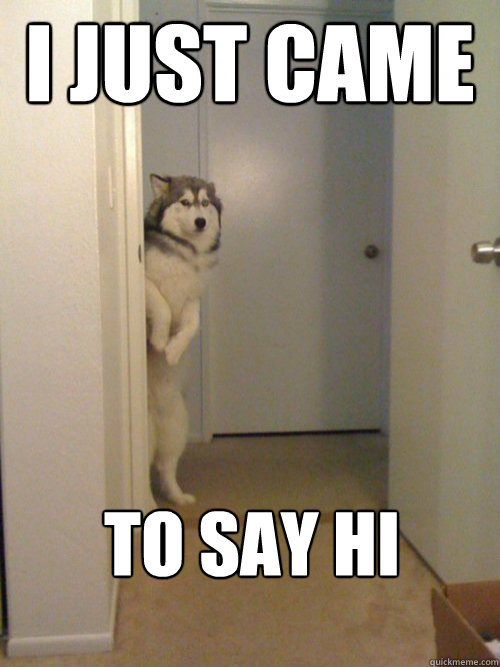
Нужно ли ставить запятую после “hi“? “Hi, John” или “Hi John“? Строго говоря, нужно – если фраза “обособление обращения запятыми” для вас не пустой звук, вам будет приятно узнать, что в английском языке действует точно такое же правило. В реальной же жизни большинство людей не ставят запятую после hi – и я советую придерживаться того же правила.
Раз уж мы заговорили о пунктуации в приветствиях: есть одна привычка, которая выглядит совершенно нормально для нас и немного странно с точки зрения носителей английского языка – восклицательный знак после приветствия. “Привет, Вася!” – совершенно нормальное приветствие в русском языке. “Hi, John!” – громкое и очень эмоциональное приветствие, которое подойдет, если вы встретили Джона после многолетней разлуки, но едва ли будет уместно в деловой переписке.
Hey
Первое время англоязычное hey у меня вызывало небольшой диссонанс. Ведь что такое “Эй!” в русском языке? Это привлечение внимания “Эй! Я здесь, иди сюда”, или сигнал к началу диалога “Эй, Вася! Слушай сюда”. Ничего подобного в английском не происходит. Hey – такое же неформальное приветствие, как и hi, не требующее продолжения: Hey, John! Hey, Mike! – и все, пошли дальше по своим делам.
Good morning / afternoon / evening
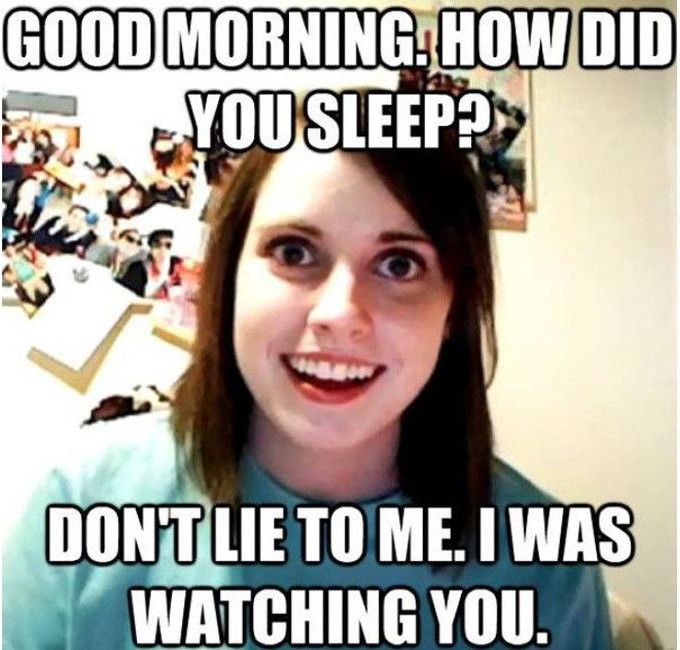
В разговорном языке good часто опускается, и приветствие становится совсем коротким: morning, afternoon или evening. Особенно часто встречается это с morning – то ли потому, что с утра все еще не проснулись для длинных фраз, то ли потому, что “утро добрым не бывает”.
Как и в русском, и во многих других языках главная сложность таких приветствие – когда заканчивается одна часть суток и начинается следующая? Опять же как и в русском языке, здесь нет строгих правил. До полудня можно смело говорить good morning, good afternoon можно начинать говорить после полудня (ведь afternoon и означает – “после полудня”), а ближе часам к 4-5 переключаться на good evening – и продолжать это делать вплоть до полуночи. А вот что делать после полуночи – не совсем понятно. Good night (доброй ночи) использовать точно не стоит, потому что это не приветствие, а прощание. Логичным кажется good evening, но только до тех пор, когда вы вспомните, что при описании времени ночь в английском – это утро (час ночи – это 1 o’clock in the morning). Видимо, английский язык как бы намекает, что порядочные люди к этому времени или дома сидят, или со всеми уже поздоровались.
How are you
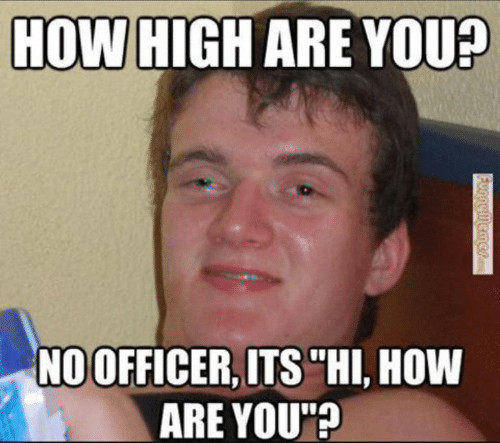
Английское “How are you” используется по другому – оно вполне походит для формальных приветствий, для незнакомых и малознакомых людей и даже (что меня всегда смущало больше всего) для мимоходного приветствия, например проходя друг мимо друга в коридоре. При этом можно попробовать весь диалог How are you? Fine, thanks. You. I’m good too, thanks! впихнуть в те доли секунды, когда вы еще не совсем разошлись в разные стороны, хотя если встреча совсем короткая, то в принципе можно оставить вопрос без ответа. Между носителями языка это получается вполне непринужденно, а у меня такой диалог иногда получается натянутым и странным…
Самое главное – и “как дела” и “how are you” не предполагают подробного ответа о всех сложностях вашей жизни, с которыми вам последнее время пришлось столкнуться. Поэтому возможные ответы на “how are you” – это good, fine, okay, not bad; затем можете поблагодарить собеседника за проявленный интерес и может быть вернуть любезность, спросив о состоянии его дел.
Есть еще несколько приветствий, которые работают по такому же принципу – How are you doing? How is it going? How are things? What’s going on? или даже You alright?
What’s up

Good / great / nice to see you
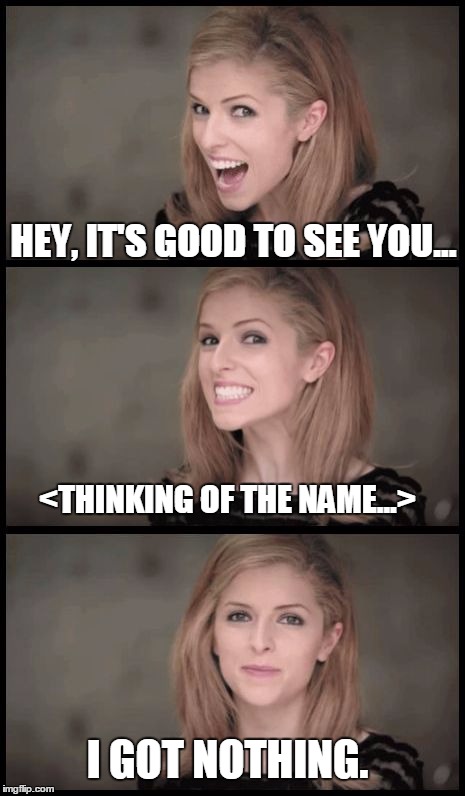
Приветствия на самые разные случаи жизни
Ну и еще несколько приветствий, на самые разные случаи жизни:
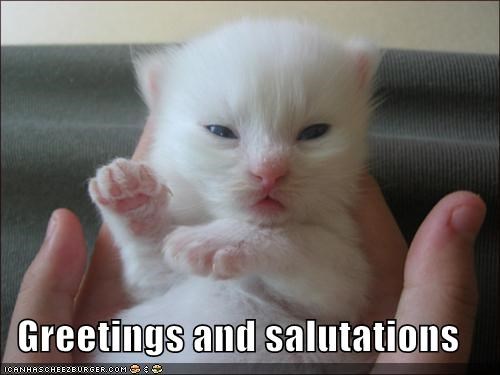
Greetings and salutations – вариант насколько убийственно формальный, что без иронии его нельзя не произносить, ни слушать.
Hi, there или hello, there – дружеско-ироничный вариант, с легким оттенком удивления. Что-то типа нашего “ну, здрасьте вам”.
Howdy – ковбойское приветствие. Выполняется с лошади, или заходя в салун после многодневного пути через прерии Дикого Запада. Вариант: Howdy, partner!
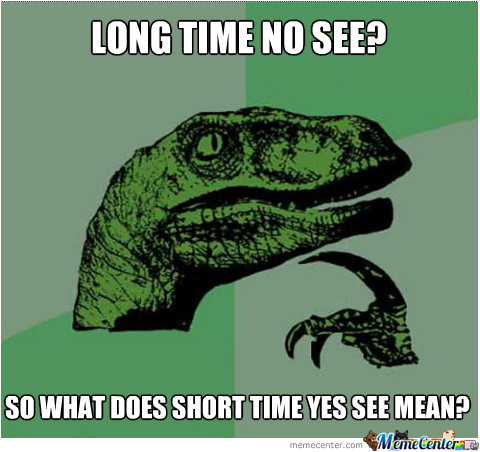
Top of the mornin’ to ya! Фраза, которую, как считается, используют в качестве приветствия ирландцы. Прекрасно подходит, например, к дню Святого Патрика. Впрочем, не стоит ее использовать со всей серьезностью: Top of the mornin’ примерно такой же стереотип, как русский тост “на здоровье” – похоже на правду, но на самом деле изобретение Голливуда.
Теперь, я надеюсь, вы сможете поприветствовать своего собеседника (или собеседников) практически в любой жизненной ситуации – от торжественного и официального выступления до встречи за бокалом пива. Остается самая мелочь – весь остальной разговор. Успехов в изучении английского языка.






